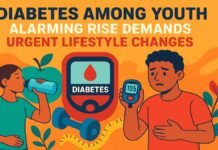
Key Points
- HDFC Bank raises minimum average balance for savings accounts opened after August 1, 2025.
- Metro & urban branches: Minimum balance now ₹25,000 (earlier ₹10,000).
- Semi-urban branches: Jump from ₹5,000 to ₹25,000.
- Rural branches: Raised from ₹5,000 to ₹10,000.
- Rule not applicable to old customers, salary accounts, or BSBDA zero-balance accounts.
- Earlier, ICICI Bank hiked minimum balance for urban branches to ₹50,000.
New Delhi: HDFC Bank, the country’s largest private sector lender by market cap, has raised the minimum average balance requirement for certain savings accounts, effective August 1, 2025.
Who Will Be Affected
This revision applies only to new savings accounts opened on or after August 1, 2025. Existing savings account holders will continue under the old minimum balance rules. Salary accounts and Basic Savings Bank Deposit Accounts (BSBDA) remain zero-balance and unaffected by the change.
New Minimum Balance Limits
- Metro & Urban Branches: Increased from ₹10,000 to ₹25,000.
- Semi-Urban Branches: Raised from ₹5,000 to ₹25,000.
- Rural Branches: Increased from ₹5,000 to ₹10,000.
HDFC Bank clarified that non-maintenance charges will apply on a monthly basis if the account’s average balance falls below the set limit.
Bank’s Rationale
While an official detailed explanation hasn’t been disclosed, industry experts cite rising operational costs, inflation adjustment, and the need to maintain profitability as possible drivers of the increase. A similar approach has been observed across private banking, with ICICI Bank recently raising minimum balance for its urban savings accounts from ₹10,000 to ₹50,000.
What It Means for Customers
- New Account Openers will need to maintain a higher monthly average to avoid charges.
- Current Account Holders remain under the old limits.
- Customers in rural areas see the smallest hike, while semi-urban and urban account holders face a 150–400% increase.






































